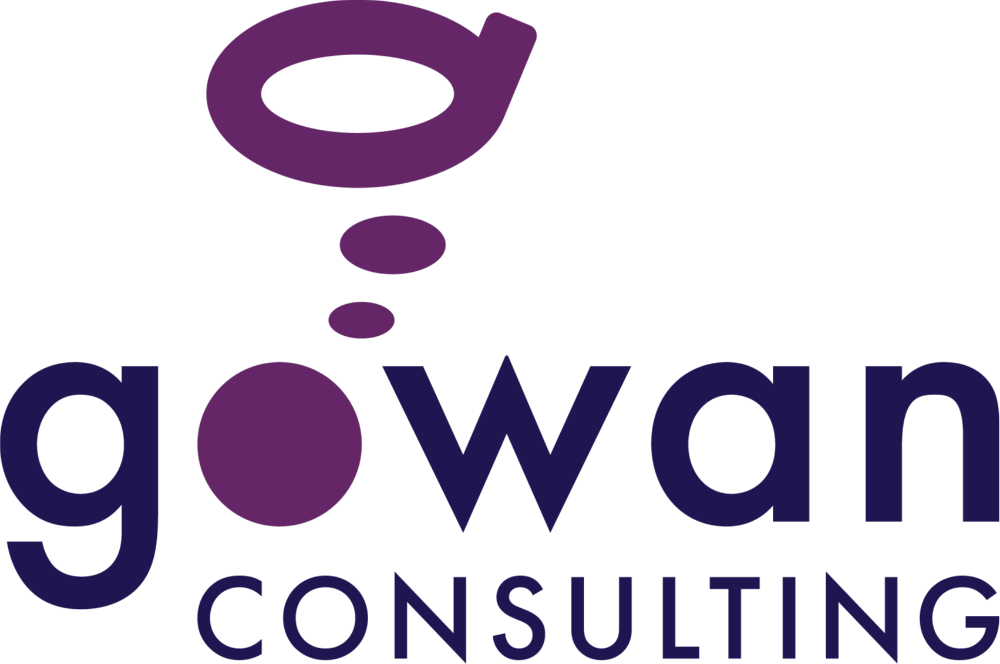Inclusivity and Psychological Safety in the Hybrid Workplace
Nov 16, 2023
A study by Gallup examining the work locations and preferences of thousands of employees has revealed that “the future of the office has arrived – it’s hybrid.”1 The latest results from their polls indicate that 5 in 10 employees are working hybrid, 3 in 10 are working exclusively remotely, and 2 in 10 are working entirely on-site. As we’ve shifted into this new working model over the past few years, the benefits of a hybrid setup have become increasingly obvious: the flexibility of remote work balanced with the benefits of in-person collaboration offers employees the freedom to balance professional and personal commitments. However, the hybrid model can present other challenges, including how to maintain psychological safety among employees.
While the hybrid set up offers flexibility and efficiency, it can also foster feelings of inequity, hinder seamless communication, and impact the sense of belonging within a team. This is even more apparent among visible minorities, those in the LGBTQ+ community, those with mental impairments or mood disorders, and those with physical impairments. These groups are less likely to describe their workplaces as psychologically safe due to discrimination, bullying, and mistreatment, and are less able to raise concerns about safety.2
Psychological safety in the workplace fosters engaged employees: it increases collaboration and productivity and reduces stress and staff turnover.3 Recognizing the potential impacts a hybrid workplace has on team dynamics and actively addressing these challenges is crucial for creating an environment where every individual feels valued, heard, and included.
How Can Hybrid Workplaces Impact Psychological Safety?
Diminished Connection and Belonging
With a workplace split between remote and in-house employees, behaviours and interactions are bound to change. Zoom meetings may look very different from in-person meetings, with employees not paying attention, multitasking, or experiencing fatigue. The absence of face-to-face interactions can erode the sense of connection among team members. Casual conversations, team-building activities, and shared experiences that typically foster camaraderie become less frequent in a hybrid setup. As a result, employees might feel disconnected, isolated, or less engaged with their colleagues and the organization as a whole. Employees may hesitate to voice opinions or seek help, fearing a lack of understanding or being overlooked due to their remote status.
Communication Challenges
The absence of physical proximity can create fragmented communication between coworkers and managers. Remote workers might feel sidelined during discussions that happen primarily in physical spaces. Conversely, those physically present might miss out on the perspectives and contributions of remote team members. Even if a whole team is able to gather in one “room,” virtual settings can create a barrier for some individuals to voice their opinions or ideas. One-fifth of people say they feel ignored in virtual meetings and nearly half of female leaders say they have difficulty speaking up in video calls.3
Without a feeling of connection and mutual understanding between employees, individuals may begin to move conflict to be about people and relationships rather than the work. According to Professor Adam Grant, task conflict is a disagreement about the content of the discussion, which is productive and creative conflict.4 There may be different opinions or viewpoints that lead people to different conclusions on the topic. This is “people against the problem.” In contrast, relationship conflict is a perception of interpersonal difference between the people in the group. This is “people against people.” In a hybrid environment, it can be more difficult to communicate, be empathetic, and build respect. It is important for leadership to focus discussions on the problem and not on the people.
Unequal Access and Opportunities
Providing equal opportunities and information can be a challenge when the organization is divided by time and space. Remote employees might face challenges accessing office resources, social support, and information shared during informal interactions. Lack of visibility can also be disadvantageous – studies indicate that remote junior, female employees receive less feedback on their work and ask less questions, which can impact their opportunities for growth and recognition in their company.5 Women may also be questioned more about their productivity while working remotely than men, with assumptions being made about time they are allocating between work and homelife responsibilities.5
On the other hand, in-person employees may feel penalized by a lack of flexibility. Forcing a return to the office without dialogue or understanding individual circumstances can erode trust, especially for individuals managing health concerns, childcare, or unique life circumstances. Marginalized groups, including employees with disabilities, non-binary, and LGBTQ+ employees, have also demonstrated a preference for hybrid work.6 Providing flexible accommodations or other workplace supports for these employees may be beneficial to ensure equity.
Harassment and Microaggressions
A hybrid workplace can also be a place where harassment flourishes without being acknowledged or addressed. According to a survey developed by researchers from Western University, 26.5% of respondents experienced online harassment in the two years before completing the survey.7 Harassment can come in many forms, including verbal intimidation or abuse, sexual comments, or microaggressions (a form of prejudice that can take the shape of an offhand comment, an inadvertently painful joke, or a pointed insult). Virtual harassment can be harder to catch when witnesses are inconsistent and when written or video communication can be misconstrued or misunderstood, leading to silence in the face of unwelcome behaviour. Eliminating behaviours that are exclusive, discriminatory, and harmful is a necessary step towards fostering a psychologically safe environment for all.
How to Build Inclusive Hybrid Work Processes
While hybrid work presents challenges, proactively addressing them can help foster psychological safety.
Establish Inclusive Communication Norms
- Structured Discussions: Ensure that everyone in the meeting has a chance to feel heard and valued. Create ritual questions – “Who haven’t we heard from on this? What perspectives are we missing? How’s the audio and visual?” Make it a practice to create bridge statements when someone joins late: “We were just talking about…”
- Make Time for Thinking: Set agendas in advance to encourage thoughtful contributions and ensure equal participation. Provide a chance for follow up after the meeting to make space for voices that may not have been heard.
- Interrupting Interruptions: Encourage completion of thoughts and ideas by interrupting interruptions, ensuring that each individual's perspective is fully heard and considered.
- Regular Check-ins: Create regular project meetings or check-ins to ensure clear expectations and goals are being communicated and that regular feedback is being offered. This might involve rotating meeting times to suit different time zones or utilizing collaboration tools that ensure everyone has an equal platform to contribute.
Provide Equal Support and Resources
- Access to Information: Document meetings, share minutes, and create centralized repositories for resources to bridge the gap between on-site and remote workers.
- Intentional Work Arrangements: Designate intentional in-office and remote days to maintain a balance between collaboration and autonomy.
Nurture a Sense of Community and Belonging
- Social Opportunities: Encourage team engagement on a social level by creating time for relationship building at the beginning of meetings or implementing regular out-of-work hangouts such as happy hours or dinners.
- Feedback and Ownership: Encourage open dialogue, seek feedback, and take ownership of mistakes, fostering an environment where it is safe to speak out.
- Actively Promote Diversity and Inclusion Initiatives. Encourage diverse perspectives and ensure all voices are heard, acknowledging the richness that different backgrounds and experiences bring to the table.
Update Policies to Reduce Harassment
- Clear Policies: Have explicit workplace harassment policies that address virtual misconduct and educate employees about zero tolerance language and examples of virtual harassment. Ensure that employees sign an updated document.
- Establish Complaint Procedures: Set up easy-to-access channels for reporting harassment and empower staff to take immediate action when observing any form of harassment during virtual interactions. Any misconduct on the employer’s virtual platforms should be flagged by IT for the employer’s investigation.
- Remote-Working Guidelines: Educate employees on appropriate virtual platform usage and establish guidelines for engaging with co-workers and clients while maintaining a respectful environment.
How to Train Leaders in Psychological Safety
Inclusive leaders are those who understand how to have good conversations and who encourage input from all team members. Having those crucial conversations early, encouraging collaboration, and staying connected are good ways to identify conflicts before they escalate. Not every leader has the skills they need to promote psychological health and safety, nor is every leader an expert in inclusive workplace principles. However, inclusive leaders know how to lead with humility and empathy, seek to build relationships, value the skill of listening, and invest in a culture of learning. Every year organizations and leaders should strive to expand their knowledge and diversify their skills.
Two types of trainings leaders should consider are manager mental health training and psychological safety at work training. These programs can guide leaders in how to understand the mental health continuum, how to support employees in distress, and how to manage team relationships. A comprehensive psychological safety course covers topics such as stopping the stigma, mindfulness, communication skills, conflict resolution, understanding unconscious bias, stopping bullying and harassment, and sexual harassment.
Contact Gowan Consulting to learn more about how we can deliver one of the programs to you. We offer training, success coaching, mental health assessments, and can help with program development for hybrid workplaces. We want to help make the difference in your healthy business!
Resources
[1] Ben Wigert, J. H. and S. A. (2023, November 13). The future of the office has arrived: It’s hybrid. Gallup.com. https://www.gallup.com/workplace/511994/future-office-arrived-hybrid.aspx
[2] Mental Health Research Canada. (2021, December). Psychological Health and Safety in Canadian Workplaces. https://www.mhrc.ca/psychological-health-and-safety-in-canadian-workplaces
[3] Horton International. (2022, September 1). What psychological safety looks like in a hybrid workplace. https://www.hortoninternational.com/news/what-does-psychological-safety-looks-like-in-a-hybrid-workplace
[4] Millar, S. (2021, February 15). Task vs. relationship conflict. Collaboration Dynamics. https://www.collaboration-dynamics.com/blog/m3dtj2s0gyx13zy453ai19ommvla1t#:~:text=Task%20conflict%20(or%20cognitive%20conflict,the%20people%20in%20the%20group.
[5] Goldberg, E. (2023, October 10). Here’s what we do and don’t know about the effects of remote work. The New York Times. https://www.nytimes.com/2023/10/10/business/remote-work-effects.html
[6] Dowling, B., Goldstein, D., Park, M., & Price, H. (2022, April 20). Hybrid work: Making it fit with your diversity, equity, and inclusion strategy. McKinsey & Company. https://www.mckinsey.com/business-functions/people-and-organizational-performance/our-insights/hybrid-work-making-it-fit-with-your-diversity-equity-and-inclusion-strategy
[7] Western News. (2022, April 5). New report shows harassment, violence still pervasive in Canadian workplaces. https://news.westernu.ca/2022/03/workplace-harassment-violence/

